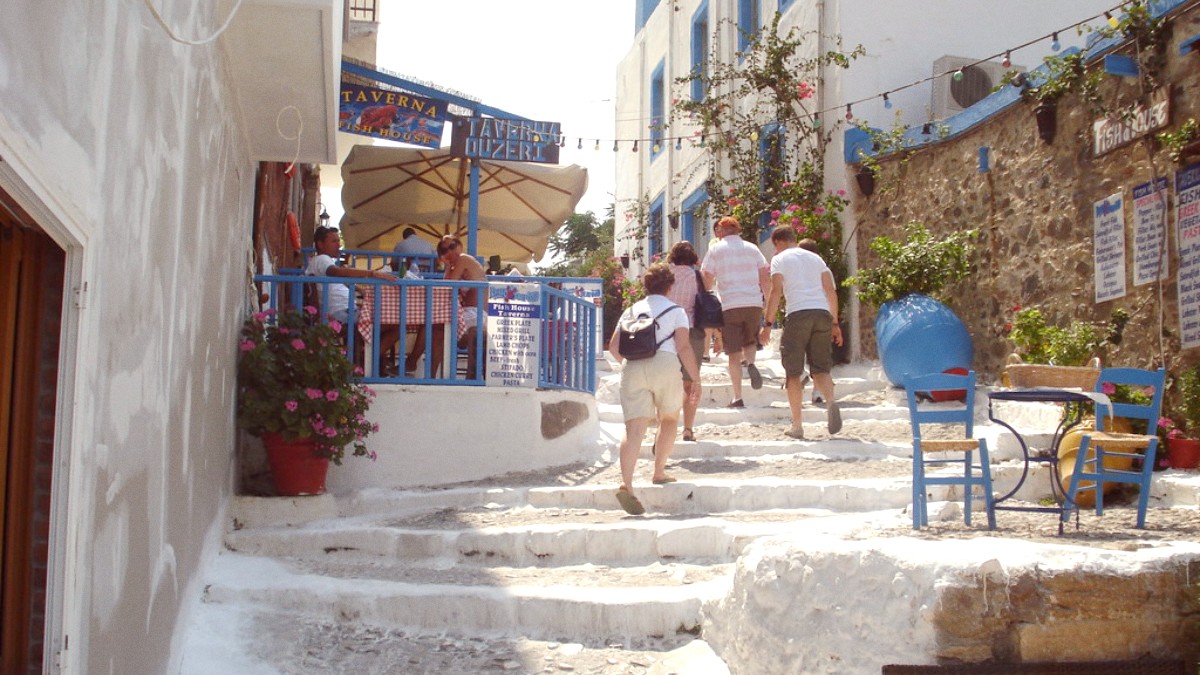
Greece
Summer (June-August) brings hot, dry, and sunny weather. Average daily temperatures range from 28°C (82°F) to 32°C (90°F). Precipitation stays minimal. The "Meltemi" winds, a strong, dry northerly wind, frequently blow, giving some heat relief.
Autumn (September-November) offers warm and pleasant conditions, with average daily temperatures from 20°C (68°F) to 27°C (81°F). September and early October remain largely dry. Rainfall grows in late autumn, specifically in November.
Beach & Water Sports: July and August have the warmest sea temperatures. June and September present pleasant sea conditions with fewer crowds.
Sightseeing & History: May, June, September, and October present comfortable temperatures for walking and exploring archaeological sites. Cycling & Hiking: April, May, early June, late September, and October work best for cycling and hiking.
Busiest & Warmest
Hottest weather for beach use. All tourist services operate at full capacity.
Most crowded. Highest prices for accommodation and flights. Intense heat for sightseeing.
Balance of Weather & Crowds
Pleasant temperatures for exploration. Fewer crowds. Moderate prices. Sea warm enough for swimming.
Late October: Some smaller businesses close, ferry schedules lessen.
Authentic & Affordable
Lowest prices. Few tourists, authentic local experience. Lush landscapes for nature walks.
Many tourist businesses closed. Limited ferry/flight options. Cooler temperatures, higher rain chance.
Summer in Kos means nightlife, with all bars and clubs in Kos Town fully operational. The island buzzes with energy, making it a lively choice for those seeking active evenings and late-night entertainment. Beaches are at their peak for enjoyment.
The shoulder season presents cooler temperatures, making extended exploration of archaeological sites and outdoor activities more comfortable. It offers a balance between pleasant weather and reduced crowds, with most tourist services still available.
Book well in advance for best selection and rates.
Ideal for those seeking balance in weather, crowds, and cost.
Check operating hours for attractions and businesses.
Stay informed on local conditions and schedules.
Meltemi winds common in summer.
Greece is a member of the Schengen Area, a zone of 27 European countries that abolished passport control at their common borders. Once you enter this area, you travel freely among member countries without further passport checks.
Citizens of non-EU/EEA/Swiss countries often need a Schengen visa for stays longer than 90 days within any 180-day period. This visa applies to tourism, business, or family visits.
Ensure your passport meets validity criteria. Have confirmations for your financial standing and travel arrangements.
The official currency in Greece, including Kos, is the Euro (€).
Travel expenses in Kos Town vary significantly based on your preferred style of travel.
Budget Traveler: €40-€70 per day. Accommodation: €20-€40 (hostel/guesthouse). Meals: €10-€20 (street food, groceries). Transport: €5-€10 (buses, walking, bicycle). Attractions: €5-€10 (free sites, limited paid entries).
Mid-range Traveler: €80-€150 per day. Accommodation: €50-€100 (3-star hotel/apartment). Meals: €25-€50 (tavernas, mid-range restaurants). Transport: €10-€25 (buses, taxis, scooter rental). Attractions: €10-€20 (several archaeological sites, museums).
These are general estimates for a single person or per night for a double room.
Hostel bed: €20-€40. Budget hotel/guesthouse: €50-€80.
Mid-range hotel/apartment: €80-€150. Luxury hotel/resort: €150-€400+.
These are general estimates for meals per person, ranging from quick bites to more elaborate dining experiences.
Street food (gyros/souvlaki): €3-€6. Casual taverna meal: €10-€20.
Mid-range restaurant meal: €25-€40. Fine dining: €50+.
Daily transport and attraction entry expenses.
Bus ticket: €1.50-€3.00. Bicycle rental: €5-€10.
Asklepieion: €8. Neratzia Castle: €6. Taxi to airport: €35-€40.
| Strategy | Action | Benefit |
|---|---|---|
| Eat Locally | Choose gyros, souvlaki, or bakery pies. | Lowers food costs, presents authentic Greek fast food. |
| Cook Your Own | Book accommodation with kitchenettes. | Substantially lowers food expenses. |
| Public Transit | Use KTEL bus network for island travel. | Efficient and affordable transport. |
Greece maintains high standards for public health and safety, making it a safe destination for travelers.
Ensure routine vaccinations (MMR, DTP, Polio) stay current.
For those visiting areas with varied food and water hygiene.
Discuss itinerary and personal health needs 4-6 weeks ahead.
Prevention Strategies
Sunburn & Dehydration: Use high SPF Neutrogena Ultra Sheer Dry-Touch Sunscreen SPF 70, wear hats, seek shade, drink plenty of water.
Mosquito Bites: Use Insect repellent. Upset Stomach: Practice good food hygiene. Sea Urchins: Wear Water shoes.
Link to image: Lagada Beach - Kos Island, Greece
Located just outside Kos Town, handles emergencies and general medical needs.
Often present faster service and English-speaking staff for non-emergencies.
Identifiable by a green cross, pharmacists provide advice for minor ailments and over-the-counter medications.
Greece sits in an active seismic zone. Minor tremors are common; significant earthquakes are rare but possible. Heatwaves during peak summer lead to high temperatures and a higher risk of heatstroke and forest fires.
Greece, including Kos, has a low crime rate, making it a safe destination. The main concern for tourists is petty theft.
Can occur in crowded tourist areas. Stay aware of belongings; keep valuables secure.
Kos Town is generally safe at night. Avoid poorly lit or deserted areas, especially if alone.
No specific high-crime areas. The town is welcoming and peaceful.